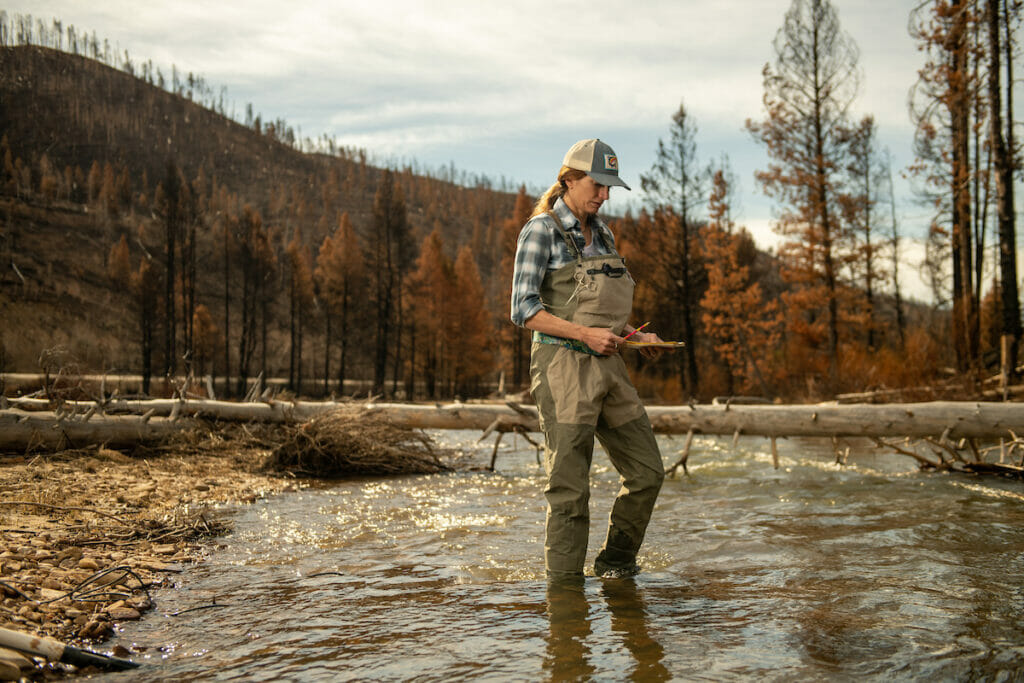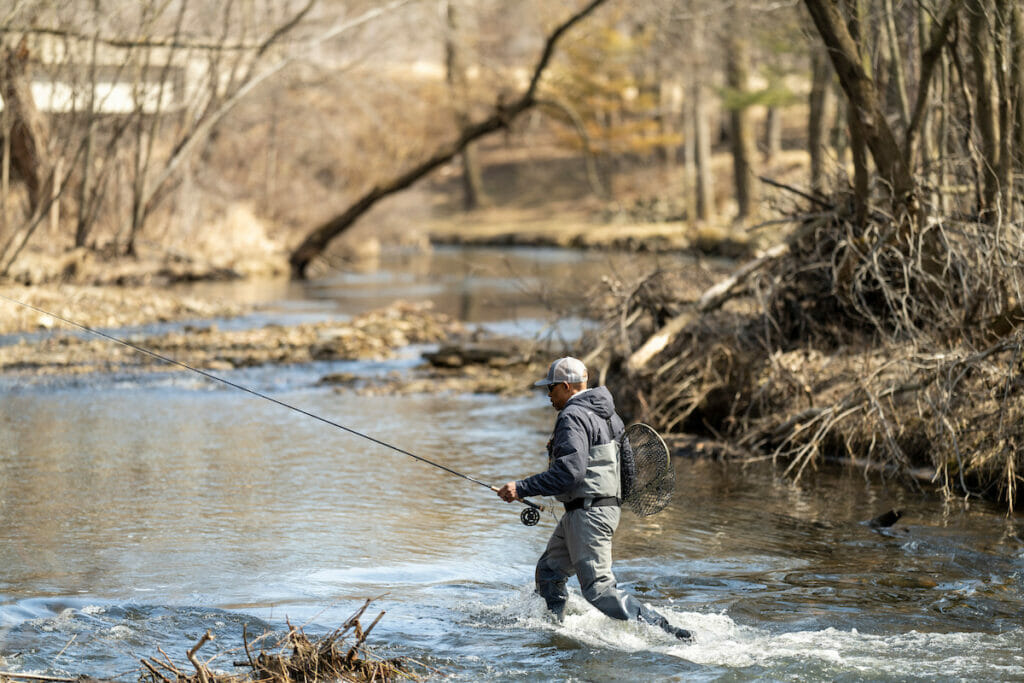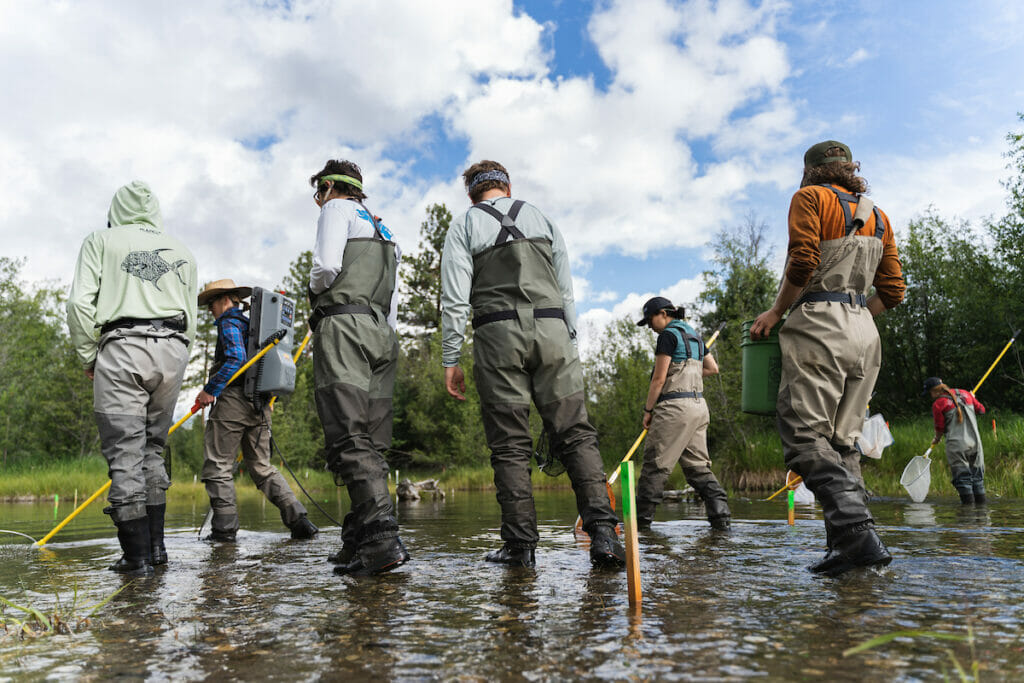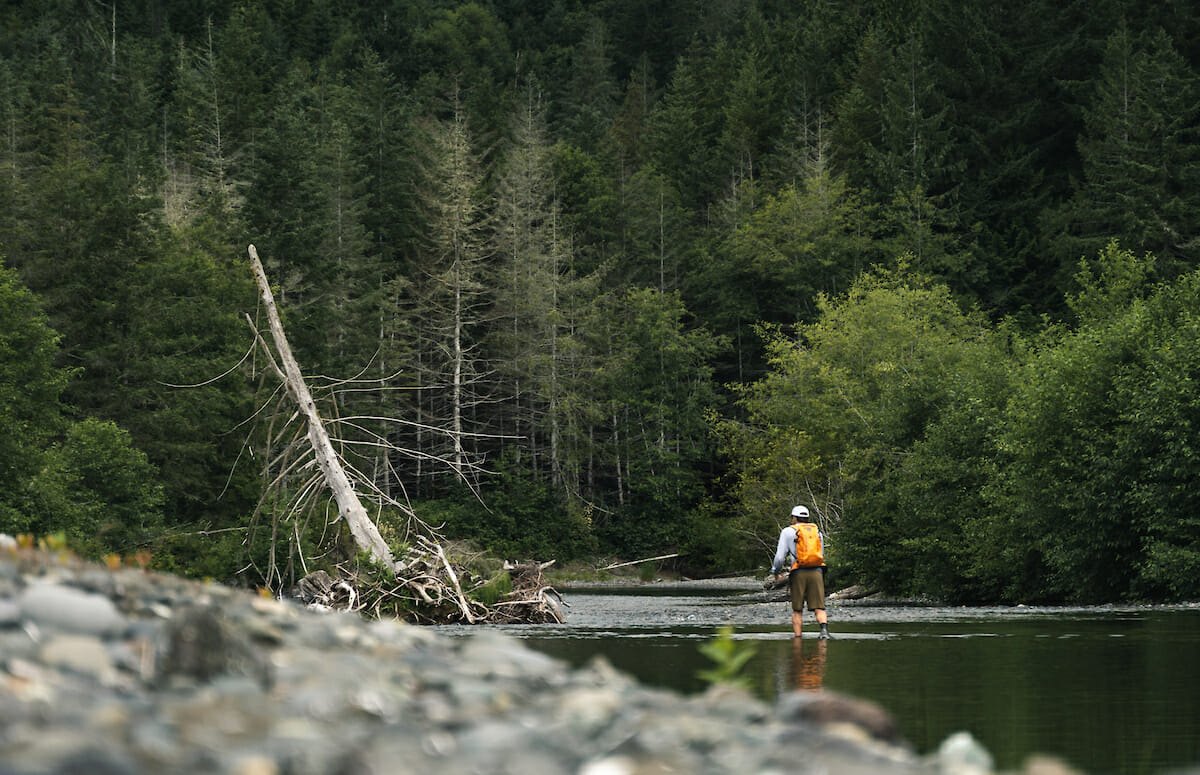One thing that totally got me hooked on fly fishing—even before I caught any fish—was the simple feeling of standing in a river with waders on.
The way the water pressure sucked the waders onto my legs…watching the swirling currents and the shapes they made on the water surface as they danced off my legs…the whole phenomenon of standing in a river, dry at the core, but immersed in the system has always seemed so cool to me. To connect with moving water in that way, is, in and of itself, worth the endeavor. And I swear I’m not lying to you when I say that sometimes I just go wade, without a rod in hand, because I simply want to be in a river.

I’ll surely never walk on water, but walking in water is an elixir for my soul.
I’ve been very lucky in my life to have fished (and waded) many rivers throughout the world. And, as such, I’ve come to believe that every river, when you wade into it, has its own distinctive feel, or grip… call it a “handshake” if you will.
After all, they’re not all the same. Some move fast and press you. Some sweep gingerly. Your purchase on the river bottom feels different with every river—some have sandy bottoms and others slippery boulders. But when you add it all together, you come to recognize and appreciate different rivers for their distinct feels as you wade into them. I like to think of all that like a river’s handshake.

For example, there’s “Uncle Deschutes.” Pretty slippery, most times. There’s power in that grip, and you need to be on guard. A little nonchalance will get you squeezed, but if you play along with a level of respect, he’s as gentle as a lamb.
“Aunt Madison” is always firm and honest. She knows the drill. She knows what you’re after, and she’ll let you dabble, so long as you show some respect in return.
“Uncle Henry” (the Henry’s Fork), well, he has different moods, depending on where you want to stand and fish. The Box Canyon can be roily and nervous. In that Railroad Ranch, he’ll let you stand just about anywhere you want (within reason) because he trusts the fish themselves to educate you.
Think about it for a little bit.
“Cousin San Miguel” can be a slippery, hard-pressing hombre, but if you stand strong and know how to roll your soles off the slippery boulders to find the anchor spots in between, and if you know where to point some casts, he’ll make you happy.
Those limestone creeks in Pennsylvania… the tailwater at Lees Ferry in Arizona… the high tumbling creeks in the Sierras of California… or the brook trout streams in the East… they all have a distinct feel, that has nothing to do with the casts you make and the fish you may or may not catch and everything to do with the feeling of walking in that water. That’s the “handshake.”
But for me, there’s another level that I only find on my home river in Michigan. My home river isn’t famous (and I’d just as soon keep it that way). It isn’t prolific, in terms of numbers of trout caught there. In his last article in TROUT, John Gierach actually described it as somewhere between a creek and a river where the currents flow so mildly they can be drowned out by a bird chirping along the riverbanks.

But when I step off these banks and wade into my home river, all the emotions and memories unfold—my first trout caught on a fly… the first time I fell in (had to reach out for that sure-fire cast!)… all the fish I hooked and lost… and the few, sacred memories created.
Even now, the crinkle on my legs prompts me to remember every moment, every memory that shaped me as an angler and sent me on my way to do the crazy stuff I now do for a living.
This river—this home river—always greets me with more than a mere handshake. It’s now more like a mother’s hug, every time this prodigal son comes home. And I love her back, more and more, with every passing year.
Go shake hands with some rivers. And even more important, learn to feel that distinctive mother’s hug of your home river. It never goes away.



